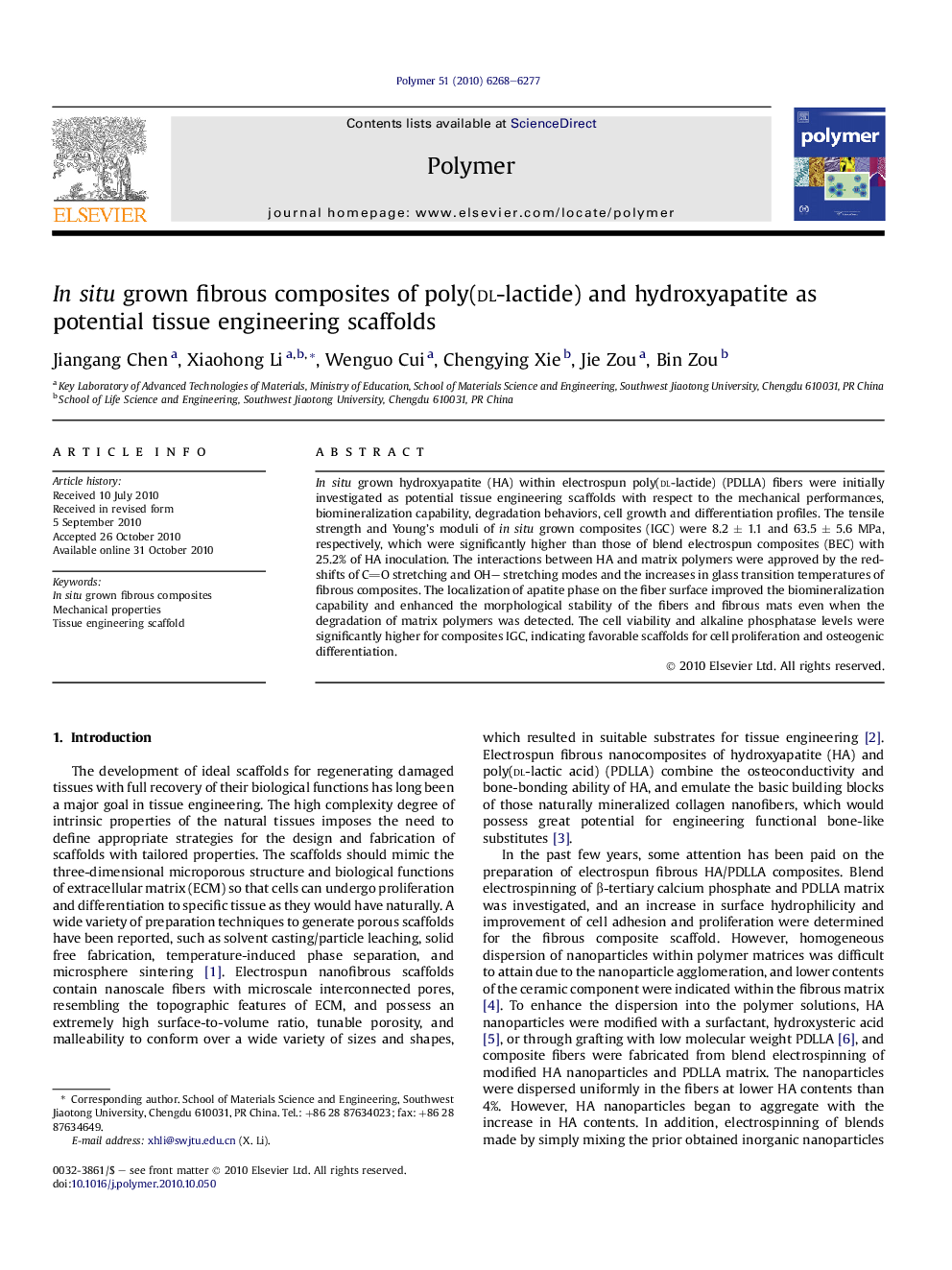| Article ID | Journal | Published Year | Pages | File Type |
|---|---|---|---|---|
| 5183403 | Polymer | 2010 | 10 Pages |
In situ grown hydroxyapatite (HA) within electrospun poly(dl-lactide) (PDLLA) fibers were initially investigated as potential tissue engineering scaffolds with respect to the mechanical performances, biomineralization capability, degradation behaviors, cell growth and differentiation profiles. The tensile strength and Young's moduli of in situ grown composites (IGC) were 8.2 ± 1.1 and 63.5 ± 5.6 MPa, respectively, which were significantly higher than those of blend electrospun composites (BEC) with 25.2% of HA inoculation. The interactions between HA and matrix polymers were approved by the red-shifts of CO stretching and OH- stretching modes and the increases in glass transition temperatures of fibrous composites. The localization of apatite phase on the fiber surface improved the biomineralization capability and enhanced the morphological stability of the fibers and fibrous mats even when the degradation of matrix polymers was detected. The cell viability and alkaline phosphatase levels were significantly higher for composites IGC, indicating favorable scaffolds for cell proliferation and osteogenic differentiation.
Graphical abstractDownload full-size image
